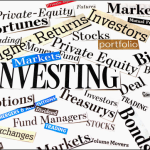 Goldman Sachs Group Inc, one of the most reputable financial institutions in the world, has been conspicuous by their absence from the US exchange-traded funds industry for over two decades.
Goldman Sachs Group Inc, one of the most reputable financial institutions in the world, has been conspicuous by their absence from the US exchange-traded funds industry for over two decades.
That changed recently when Goldman Sachs Asset Management – the fund manager overseeing more than $1 trillion assets, rolled out their first ETF based on the so-called “smart beta” methodology – a catchall phrase for funds that follow indexes with rules-based and quantitative investment strategy.
Till recently, Goldman’s name would be linked with two small ETNs – the $125 million GS Connect S&P GSCI Enhanced Commodity Total Return Strategy ETN (GSC) and the $7 million Claymore CEF-Linked GS Connect ETN (GCE).
Goldman is the latest large asset management firm to wade into the non-traditional index ETF space. Legg Mason and John Hancock are also preparing to dip their toes with their index tracking ETFs. The firm received SEC approval to launch ETFs back in February and quickly drew plans for the first 11 ETFs, including five that replicate various hedge fund investment strategies.
The newly launched Goldman Sachs ActiveBeta US Large Cap Equity ETF (GSLC) is the first of the six planned funds in its series of ActiveBeta ETFs. GSLC follows a proprietary index, developed in-house – of US large-cap stocks that weights stocks on four factors: value, momentum, quality and volatility.
The fund seeks to outperform the broader equity market by avoiding overvalued stocks and selecting undervalued companies with upward price momentum, sustainable profits and low volatility.
The fund’s underlying index – the GS ActiveBeta Large Cap Equity Index, is comprised of four sub-indexes: value, momentum, quality and low volatility, and each sub-index receive equal weight.
The index is rebalanced and reconstituted quarterly and selects its constituents from the universe of Solactive US Large Cap Index. Stock weights are assigned according to each sub-index/factor’s set of criteria that include stock price, RoE or profit/assets, risk-adjusted returns and daily standard deviation/volatility of returns.
You should note the new fund faces concentration risks to the extent of the underlying index’s exposure to a particular sector and may face higher losses as a result of adverse economic cycles affecting any particular sector/industry. Top holdings of GSLC include heavyweights such as Apple Inc, Microsoft Corp, Exxon Mobil, J&J and Pfizer.
Sector wise, information technology (20.0 percent), consumer discretionary (18.2 percent), healthcare (15.6 percent), financials (14.3 percent) and consumer staples (12.8 percent) get double-digit allocation, while industrials (9.2 percent), energy (3.7 percent), materials (2.5 percent), telecom services (2.0 percent) and utilities (1.6 percent) receive allocations in single-digits.
While GSLC was seeded with $50 million in institutional assets, assets under management have quickly risen to $106.0 million since inception, making it one of the most successful ETFs launched this year.
The fund’s management fee is a paltry nine basis points – at least till 2016, which equals the plain-vanilla SPDR S&P 500 ETF (SPY) and much lower than the industry average.
According to Morningstar, average fee for the US large-cap “strategic beta” (the research firm’s nomenclature for “smart beta”) fund is 39 basis points.
Disclosure: No holdings
Contact Ulli